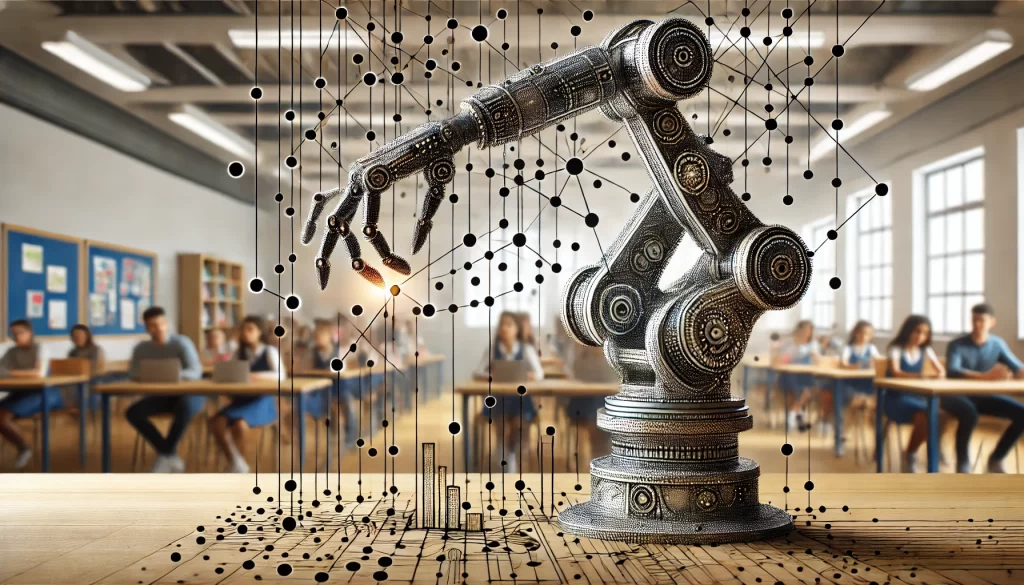Table of Contents
In the fast-paced world of technology, “Robots Dot to Dot Nattapong” has emerged as one of the most innovative concepts in creativity and robotics. This groundbreaking idea blends robot projects with artistic dot-to-dot activities, creating stunning robots that captivate people of all ages. Whether you’re a tech enthusiast or someone intrigued by the fusion of robot design and art, this new robotics approach is exciting and inspiring. Let’s explore the brilliance behind this revolutionary concept and see how it’s transforming how we think about robotics concepts, design, and automation.
What is Robots Dot to Dot Nattapong?

“Robots Dot to Dot Nattapong” is a visionary concept brought to life by Nattapong, an innovator in robotics and art. His idea combines dot-to-dot puzzle formats with dot robots and robotic systems, offering an interactive and engaging way to explore technology. The familiar dot-to-dot pattern many of us remember from childhood has been reimagined with the help of dot-to-dot robots. These robots follow the traditional connection of dots and bring them to life with robotic movement and precise execution.
Instead of just completing a picture, the robot’s movements transform connected dots into robot-themed images that move, interact, and evolve. This makes robotics more accessible and enjoyable for everyone, from kids learning through dot-to-dot exercises to hobbyists working on complex robot projects.
How Do Robots Dot to Dot Nattapong Work?

At the core of “Robots Dot to Dot Nattapong” is the simple yet advanced dot-to-dot guide. This guide lays out a series of numbered dots that form the structure of the robot’s path. As the dots are connected, algorithms let dot robots interpret the path, converting it into a movement that brings the design to life. The dot robot uses this information to move, creating captivating visual results.
Once the dots are connected, the robot follows the dot-to-dot pattern with precise movements. These dot-to-dot robots create robot-themed images through coordinated actions, turning static designs into stunning robots that feel alive. By allowing users to program robots this way, Nattapong’s work merges art and technology, letting people engage with robots creatively and interactively.
This blend of creativity and robotics opens up endless possibilities for artists, students, and hobbyists who can program and customize their robots through this accessible method.
The Brilliance Behind Nattapong’s Concept

The brilliance of Nattapong’s work lies in his ability to merge two distinct areas: robotics concepts and dot-to-dot puzzles. His idea isn’t just about creating robots—it’s about sparking curiosity, innovation, and creativity in an approachable way. By blending dot-to-dot activities with robotics, Nattapong has created a space where learning and fun go hand in hand.
One key aspect of his concept is the accessibility of robotics. Traditionally, working with robots requires technical knowledge and expertise. However, Nattapong’s dot-to-dot robotics kits make it easier for people to engage with robots. These kits allow users to experience robot design firsthand through simple dot-to-dot or more complex robot projects. The flexibility of these kits encourages people of all skill levels to explore robotics in a new and engaging way.
By making robotics more user-friendly, Nattapong’s concept inspires a broader audience to delve into technology, art, and engineering.
How Robots Dot to Dot Nattapong Inspires Learning
One of the most exciting aspects of “Robots Dot to Dot Nattapong” is its educational potential. This unique approach to robotics offers a fun and engaging way to introduce learners to robotics concepts. Integrating dot-to-dot puzzle formats with dot-to-dot exercises, Nattapong makes robotics more digestible for students of all ages.
Students develop critical thinking and problem-solving skills as they work through dot-to-dot robotics kits. They learn to program robots by connecting dots while gaining hands-on experience with essential components of robot system design. These experiences allow students to understand how robots work, how to control them, and how to bring creative ideas to life through technology.
In schools, dot-to-dot robot projects provide a perfect entry point into STEM (Science, Technology, Engineering, and Mathematics). By completing these projects, students not only learn how to work with robots but also how to engage with broader robotics concepts. Teachers can use these tools to make complex subjects more approachable and fun.
Through these interactive dot-to-dot activities, even a tiny robot can become a powerful educational tool, helping students understand the fundamentals of engineering, programming, and design in a hands-on environment.
Why Robots Dot to Dot Nattapong Is Revolutionizing Robotics
The world of robotics is often viewed as complex and technical. However, “Robots Dot to Dot Nattapong” breaks down these barriers, making robotics more accessible to a broader audience. Nattapong has democratized robotics into an artistic and creative experience through dot-to-dot games and robot projects.
By focusing on simplicity, Nattapong’s concept invites artists, students, and hobbyists to explore the possibilities of robotics. With dot-to-dot robotics kits, users can program robots in an intuitive and fun way. The ability to create stunning robots and intricate designs opens up a new world of possibilities for those interested in technology and art.
This shift in how we view and interact with robots has the potential to influence industries far beyond education and entertainment. By merging robotics with art, Nattapong’s concept could inspire healthcare, design, and engineering innovations.
Bringing Robots to Life Through Art
Nattapong’s dot-to-dot robots are not just functional tools but also creative artists. Using robot design principles alongside artistic concepts, these robots create beautiful, intricate designs that evolve and move mesmerizingly. The robot-themed images produced by these dot-to-dot robots highlight the potential for creativity within the field of robotics.
This blend of art and technology encourages artists and engineers to think about robots in a new light. Dot-to-dot robots show that technology can be a medium for personal expression, inviting a new generation of creators to explore the artistic possibilities of robotic systems.
Also Read: Golden Technology: Unlocking Extraordinary Innovation and Success
The Impact of Robots Dot to Dot Nattapong on the Future
Looking toward the future, the impact of “Robots Dot to Dot Nattapong” is clear. This innovative idea combines dot-to-dot puzzle formats with robotics, creating a new pathway for learning, creativity, and innovation. This concept will likely inspire future generations of engineers, artists, and designers to think about how technology and creativity can work together.
Encouraging a New Generation of Innovators
Nattapong’s work is a platform for future innovators. With tools like dot-to-dot robotics kits and dot-to-dot exercises, young learners are encouraged to explore careers in fields like engineering, robotics, or digital art. These kits and projects make learning about robotics fun and accessible, showing that robots don’t have to be intimidating—they can be playful, educational, and creative.
As technology advances, it’s important to encourage future generations to think critically and creatively. Nattapong shares his vision through his concept, helping others see that robotics can blend technical skill with artistic expression in ways we’ve never imagined before.
For too long, the world of robotics has been seen as technical, rigid, and difficult to understand. But with “Robots Dot to Dot Nattapong,” that perception is changing. By merging dot-to-dot puzzle formats with robotic systems, Nattapong has created a new way for people to engage with robots. His concept is more than just an invention—it’s a movement transforming our thinking about robots, creativity, and design.
Whether in education, entertainment, or personal hobbies, Robots Dot to Dot Nattapong inspires individuals to see technology through a new lens. It’s a revolutionary idea reshaping the future of robotics, bringing art, innovation, and accessibility together powerfully and excitingly.

